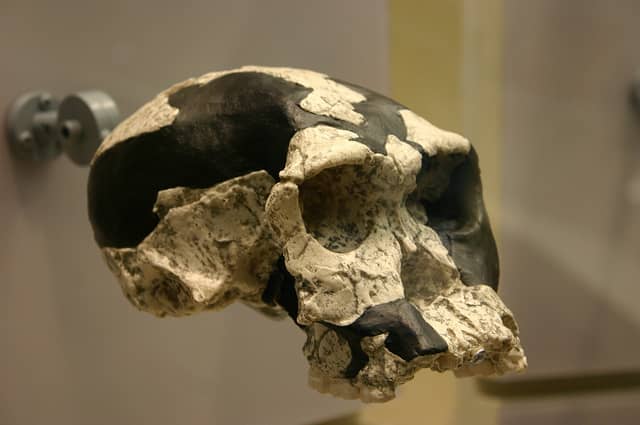New Evidence Suggests Humans Hunted for Meat 1.6 Million Years Earlier Than Previously Thought
OutdoorHub Reporters 09.25.12

Up until recently, it was widely believed that humans hunted for meat up to 400,000 years ago. A new discovery by anthropology professor Henry T. Bunn at the University of Wisconsin pushes back that assertion another 1.6 million years. This means that our human ancestors, Homo habilis (a diminutive and small-brained ape-like species), may have been selectively hunting adult animals in their prime two million years ago.
While it was commonly accepted that humans have been eating meat for millennia, scientists believed they ate the scraps of kills left by other predators or scavenged from animals that died of natural causes, as referenced in The Guardian and The Observer.
Bunn spoke at an annual meeting of the European Society for the Study of Human Evolution (ESHE) in Bordeaux to present his findings. The first evidence of hunted meat appeared at a site in Germany where evidence existed of horses being speared and eaten some 400,000 years ago.
“We know that humans ate meat two million years ago,” Bunn said. “What was not clear was the source of that meat. However, we have compared the type of prey killed by lions and leopards today with the type of prey selected by humans in those days. This has shown that men and women could not have been taking kill from other animals or eating those that had died of natural causes. They were selecting and killing what they wanted.”
Bunn determined this was the case by studying a huge, ancient butchery site in the Olduvai Gorge in Tanzania. About 1.8 million years ago, human ancestors brought wildebeests, antelopes and gazelles there to strip the meat from the bones to eat. They determined the age of the animal carcasses by studying the teeth in their skulls. It was found humans were butchering adult large antelope in their prime and older small antelope species. In contrast, lions and leopards preferred more elderly representatives of the large antelope species, and adults in their prime of the smaller antelope species.
“For all the animals we looked at, we found a completely different pattern of meat preference between ancient humans and other carnivores, indicating that we were not just scavenging from lions and leopards and taking their leftovers. We were picking what we wanted and were killing it ourselves,” Bunn said.
Speaking on speculation, Bunn predicted that these Homo habilis waited in trees until antelopes or gazelles passed by, then speared them at point-blank range – something to think about the next time you’re sitting in a tree stand with a handy bow or rifle!

